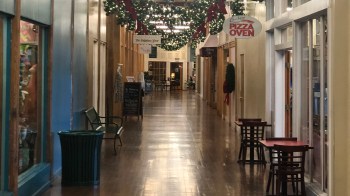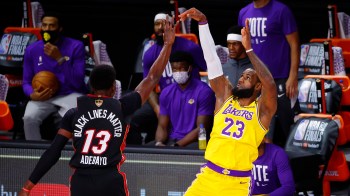
The economics of holiday markets, explained
Share Now on:
The economics of holiday markets, explained

Christmas is only a few days away, but leather goods maker Jon Wye has spent the last six months preparing for it.
“I start getting nervous around June, and I start production in July,” said Wye at his studio in Washington, D.C. There, he spends months designing and handcrafting the hundreds of belts, purses, straps and dog collars he hopes to sell at holiday fairs and markets.
“The best marketing [for my business] to this day has been direct-to-consumer,” Wye said. “Most years, 50% of my sales are in the last six weeks of the year.”
That’s not too surprising when you consider that in the U.S., public markets, which include temporary holiday markets, have seen massive growth, driven by the expansion of farmer’s markets. But measuring the greater impact of holiday markets overall is a challenge because, beyond the more established ones, many markets are run informally.
What we do know is that holiday markets can be a tremendous boon for the artisans and small business owners, who can make significant percentages of their annual revenue. But to participate can cost a pretty penny, especially at the most popular and highest attended markets in the U.S. The Downtown Holiday Market in Washington, D.C., for example, costs an average of $400 to $500 per day for a vendor.
“It may sound very high for businesses who are thinking of doing this, but we give them bang for the buck,” said Michael Berman, an artist-turned-market manager, who founded the D.C. market. He offered space to 80 vendors this year; hundreds more applied.
That fee pays the wages for festival staff, marketing costs, the necessary city permits, tents and other physical infrastructure, the police officers required to manage traffic, and covers artists fees for 90 musicians to perform in November and December.
Berman estimated vendors can expect an average of 10,000 visitors on a weekday and 20,000 on a Saturday or Sunday.
While many retailers saw lower numbers of in-person shoppers in 2020 and 2021, Berman said the pandemic proved to be a boon for his market as people sought out open-air shopping to lessen their chances of contracting Covid-19. Berman was also able to lobby the city government to shut down the entire street, expanding the footprint of the market beyond the sidewalks, which he believes helped increase sales by improving the overall shopping experience.
“I do think that markets are an amazing option if you don’t want to have or can’t afford a storefront,” said Tori Partridge, the owner and founder of Terratorie Maps + Goods. She currently participates in holiday markets in Baltimore, Philadelphia and Washington, D.C, at which she typically earns 20% to 30% of her annual revenue.
“The traffic that we get, the associated services, the music, the food, the fact that it is a destination, all make it worth it,” Partridge said, though the upfront costs are “wild.”
“We are spending almost $30,000 [this year] just being at markets,” said Partridge. “You could rent a storefront for a month in a really great spot for that kind of money.”
While the most expensive markets in the U.S. can charge vendors tens of thousands to participate, some cost as little as $100. Determining which markets are worth the fees they charge, Partridge said, can be a process of trial and error.
“At what point do we decide it’s too much? It’s a question we [makers] talk about a lot,” Partridge said. She hasn’t yet pinpointed a specific price, but she pays close attention to profits and how well the holiday markets are run. “If either of these things dipped, that would make us reconsider.”
This year, many holiday markets, which had limited the numbers of visitors due to the pandemic, are returning to full capacity. But that may not be enough to counteract the impact of inflation on consumer spending. In a RetailMeNot poll from October, about half of people said they planned to buy fewer gifts this year due to high prices.
Berman has encouraged his vendors in D.C. to modify their expectations but is ready to be surprised.
“I don’t think it will be a record-breaking year,” said Berman. “But I told [vendors] the same thing in 2020, because I thought that no one would come, and it was huge. It broke all records.”
That’s because, as Berman puts it, “people have to go buy stuff for Christmas.”
There’s a lot happening in the world. Through it all, Marketplace is here for you.
You rely on Marketplace to break down the world’s events and tell you how it affects you in a fact-based, approachable way. We rely on your financial support to keep making that possible.
Your donation today powers the independent journalism that you rely on. For just $5/month, you can help sustain Marketplace so we can keep reporting on the things that matter to you.


















